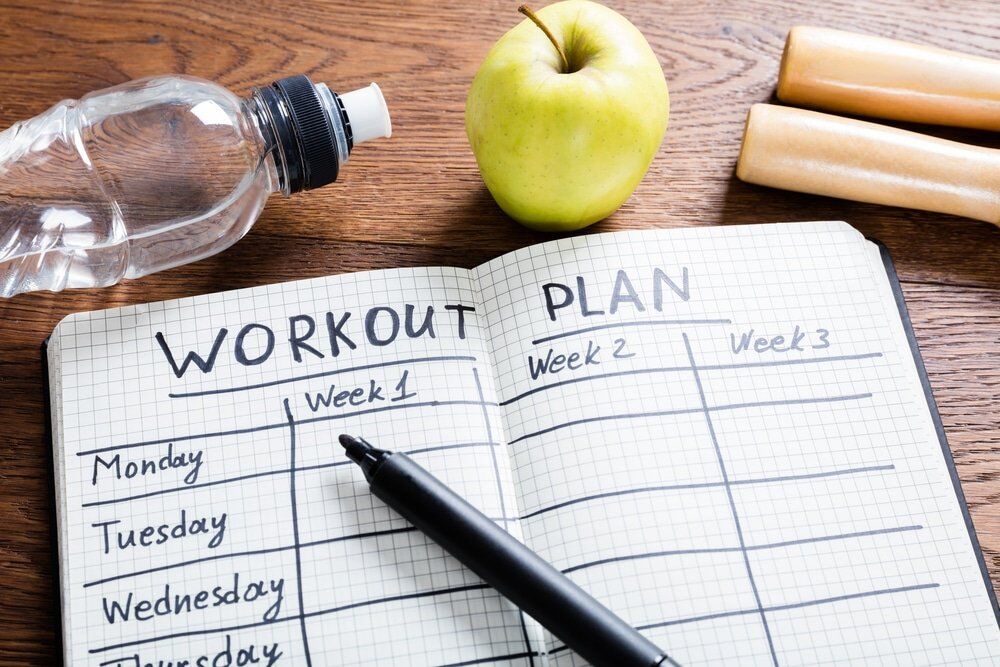
Starting Your Own Training Plan
When it comes to a training plan, there truly is no correct or incorrect way to be programmed, however any plan should consider the training level of the individual, their training history, time availability and schedule, and of course the goal itself. A plan’s ability to match these factors for the individual should determine how good, relevant and successful the plan is. A pro bodybuilder’s plan might look great, but if it doesn’t satisfy the above conditions, it simply won’t work or be appropriate for you.
 1. Frequency:
1. Frequency:
As mentioned, the frequency that an individual should train will depend on the goal, time availability and schedule.
A higher frequency, whereby each muscle is trained more frequently will allow more practice and exposure to the new movements, develop neurological adaptations, and mean you will complete less volume per muscle, per session; all of which are ideal for a beginner who has a low training capacity – being sore after a session for 7 days isn’t practical or ideal for progress.
General recommendation: for a beginner, between 2-4 total sessions per week, training each muscle at least 2x per week, and even as much as all 4. This can be achieved via the following training splits:
– 2 sessions per week – full body each session
– 3 sessions per week – full body each session or upper/lower/full body
– 4 sessions per week – upper/lower x2
2. Volume :
As mentioned above, a beginner cannot tolerate as much volume, as this needs to be accumulated over time.
S
General recommendation: 40-50 reps p/muscle p/session = 80-150 reps p/muscle p/week
e.g. Chest – day 1: Bench press 4×10 = 40 reps, day 2: incline db press 4×10 = 40 reps
= 80 reps per week.
However, these are not absolutes and not simply a case of 39 means no gains, or 51 is too much, but rather just guidelines.
3. Load + Reps:
This will largely depend on the primary goal. Muscle gain or strength gain?
Muscle gain general recommendation: 60-75% of total reps in the 6-12 ra
nge, the rest in 2-5 and/or 12+.
Strength gain general recommendation: 60-75% in 1-5, rest in 6-12.
4. Progress:
Having a set progression plan will complement the program and ensure continual improvements and growth over time. A log book will come in very handy here.
A simple way to do this is to step-load volume, then weight and repeat.
For example, using an 8-10 rep range for bench press –
– Week 1: 50kg x9,8,8 (reps)
– Week2: 50kg x9,9,9
– Week 3: 50kg x 10,10,10 (top end of rep range achieved)
– Week 4: 55kg x 8,8,8
– REPEAT until 55kg x 10,10,10, then move up to 60kg.
5. Exercise selection:
Rather than only thinking about specific muscles, consider the different movements to ensure all bases are covered for a balanced plan; not just chest and biceps.
– Push – (vertical e.g. military press, dumbbell press), (horizontal e.g. bench press, incline db press)
– Pull – (vertical e.g. pull-ups, lat pulldown), (horizontal e.g. bb row, db row)
– Squat – (e.g. barbell squat, goblet squat)
– Hinge – (e.g. deadlift, kb swing, trap-bar deadlift)
– Single-leg – (e.g. split squat, lunge, step-up)
– Extras – e.g. biceps (barbell curls, dumbbell curls), triceps (dips, pushdowns), side/rear delt (db side raises, rear delt fly), calves (standing calf raise, seated calf raise), abs (cable crunch, hanging knee raise)

Additional work:
– Anaerobic cardio – HIIT (sprints, circuits)
– Aerobic cardio – Low/medium steady state (long walks, steady-state cardio machines)
– Carries – farmers walks, overhead, suitcase carries
– Mobility/flexibility – ankle, hamstring, hip, adductor, t-spine, shoulders
6. How that might look:
– 2 sessions per week – full body each session.
– Practical recommendation:
Session 1 –
5-10 mins mobility
A1. Barbell squat – 4×10
B1. Kb swing – 3×12
B2. Walking lunge – 3×12
C1. Incline DB press – 4×10
C2. Pullups – 4×10
D1. Barbell curls – 2×12
D2. Tricep dips – 2×12
D3. Db side raises – 2×12
Finisher – Rower sprints – 20 secs sprint/40 secs rest x 5-10 rounds
Session 2.
5-10 mins mobility
A1. Deadlift – 4×8
B1. Split squat – 3×12
B2. Hamstring curl – 3×12
C1. Military press – 4×10
C2. Barbell row – 4×10
D1. Standing calf raise – 2×12
D2. Cable crunch – 2×12
Finsher – Stationary bike – 20-30 mins steady state
Bear in mind, there’s no right or wrong way to program, but this provides a balanced approach to ensure all movements are trained, a view to continued progress, allowing sufficient recovery, fitting within an individual’s schedule and goal, and also scope to improve and increase work capacity over time.






No Comments yet!